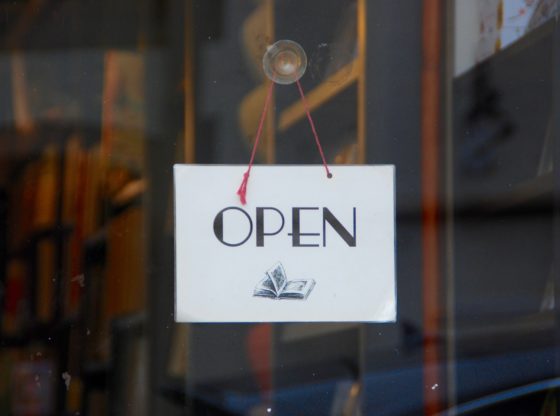How does a small business safely reopen during a pandemic? The answer is not through a “lights on” approach where a storefront flips the CLOSED sign to OPEN and unlocks its doors. A safe, careful reopening must be done through a series of reopening phases.
As states ease their lockdown periods, each industry is taking a phasing approach to reopening its small business storefronts. Customer safety and commitment to public health is critical in order to navigate a reopen in the new normal, and small businesses are working diligently to ensure a safe grand reopening.
It’s recommended that all small businesses check in with the state in which they do business for a full list of safety preparation guidelines. In the meantime, however, here’s a look at a few areas every small business should prepare for when reopening their storefronts for a safe shopping experience.
Receive a Building Assessment
Has your storefront been closed for several months? Did you keep the HVAC turned off during this time? Spaces without ventilation can develop structural mold and bacteria if they are shut down for a prolonged period of time.
Before reopening, small business owners will need to have a NORMI professional review their space. NORMI stands for National Organization of Remediators and Mold Inspectors. A NORMI professional will conduct an assessment of the building. They may evaluate if there is the presence of mold or other IAQ contaminants. Once the complete their evaluation, a NORMI professional will provide appropriate recommendations for the reduction of any mold, bacteria, and/or other contaminants. This ensures the space is safe for business owners, staff, and customers to come in and out.
Hire a Certified Sanitizing Professional (CSP)
Once you have an assessment of your small business storefront, you’ll need to conduct the next step in deep cleaning. In addition to mold, it’s possible that airborne bacteria and surface microbial loads may also be present in the storefront.
Do not guess whether or not this is true of your space. Hire a certified sanitizing professional (CSP) through NORMI to find out. A CSP will conduct testing to determine if there is airborne or surface microbial loads in your storefront. Small business owners may also enroll in online CSP courses. This allows for a better understanding of tools necessary to ensure purification maintenance and the role ongoing sanitation plays in reducing surface microbial loads.
Implement Sanitation and Distancing Policies
Implementing these policies to keep visitors and staff safe is a two-prolonged approach. First, you will need to train employees on new sanitation and social distancing policies. Then, you’ll need to share news about these policies with customers. You may share this news through a variety of methods ranging from window and in-store signage, social media posts, and e-newsletters.
Here’s a look at a few policies most businesses, including those of low and high-risk, will need to follow.
- Masks and PPE equipment. Customers must wear masks upon entering the building and while they shop. Employees must also wear masks and gloves. Additional PPE equipment may be installed throughout the storefront. This may include physical barriers like plexiglass in front of cashiers and contactless payment.
- Visible sanitation supplies. Your storefront should be able to provide disinfecting wipes and hand sanitizer to customers.
- Wellness checks. Employees will need to have a temperature check taken before entering the space. High-risk establishments, such as hair and nail salons, may also have customers fill out a COVID-19 questionnaire prior to entry. This gives the owners additional information about the guest’s health history through a self-assessment.
- Social distancing markers. Tape on the ground may be placed to mark off six feet. This ensures best practices for social distancing from other shoppers.
- Increased cleaning practices. New store policies may include shorter shopping hours with the small business closing earlier. This gives staff extra time to sanitize and clean surfaces. Employees will also increase cleaning and sanitation throughout the workday within the space.
Do your customers have more questions? Train staff to be ready to answer common questions. Make sure each team member is kind, friendly, and respectful with the store’s guests.
Continue Offering Lockdown Initiatives
Did your small business pivot to offer a new service or initiative during lockdown? If you started a new service that is popular with customers, keep it going at your storefront. Here are some initiatives small business storefronts may continue to implement.
- Curbside pickup.
- Contact-free delivery.
- Take out that may be ordered ahead of time for pickup, either by the customer or a third-party delivery service.
Navigating towards the new normal in business is meant to be a marathon, not a sprint. Understand that the customer experience has changed during shutdown. Readjust accordingly. Make your business agile in order to meet the needs of your customer base and ensure a safe grand reopening.
Ready to start a small business storefront of your own? We can help! Visit mycorporation.com and let our team of professionals assist you with all of your small business needs.
